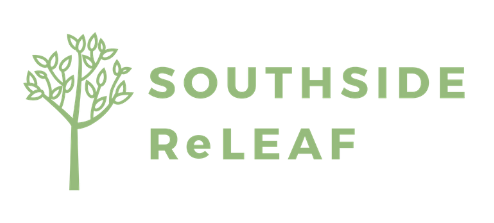Plant Selection at Ernest Road: Grasses
Bottlebrush Grass (Elymus hystrix)
Bottlebrush grass is an ornamental grass that is native to the eastern United States and Canada. Its name comes from its unique seedhead—a slender, long, spiky structure with densely-packed bristly spikelets. Bottlebrush grass has a simple alternate leaf arrangement. The leaves can grow to be longer than 6 inches and be blue, gray/silver, or green in color. This plant prefers to grow in partially shaded areas within woodlands and riparian zones, but is tolerable of heavy shade. It tolerates a wide range of soils but performs best in well-draining soils. This species becomes drought tolerate once established, making it an excellent ornamental plant for urban conditions.
Bottlebrush Grass Overview
Bottlebrush Grass Leaves
Bottlebrush Grass Seedhead
Bottlebrush Grass Growth Form
Indian Wood Oats (Chasmanthium latifolium)
This plant is from the Poaceae (grass) family and is native to the central and eastern United States and northeastern Mexico. It is a popular choice for landscaping as it is easy to grow, tolerates partial shade, is deer resistant, and does well in wet well-draining soils. It grows to be 2 to 5 feet tall and 1 to 2 feet wide in clumps. Its distinguishable flat seedheads emerge in the springtime and change color throughout the season, turning tan in the summer and purple in the autumn. The inflorescence has an open panicle characteristic with dropping branches. Indian wood oats serve as a larval host plant for the Northern Pearly-eye butterfly (Lethe anthedon) and a variety of Skipper species. It also serves as a food source for birds and small mammals.
Indian Wood Oats Overview
Indian Wood Oats Leaves
Indian Wood Oats Seedhead
Indian Wood Oats Growth Form
Poverty Oat Grass (Danthonia spicata)
Danthonia spicata is a native perennial grass species that can be found throughout the majority of the United States, save for California, Nevada, and Utah. It prefers to grow in partially shaded fields, pine stands, bluffs, and rocky shores that have infertile sandy or rocky soils. The base of this plant consists of wiry clumps of stems and curly basal leaves. These short rosettes make the plant easily identifiable even when it is not flowering. It produces a small and delicate inflorescence as the tops of its stems that resemble oats, hence the name. These stems can range form 4 inches to 2+ feet in height. This plant is ideal for ground cover or erosion control as it possesses fibrous roots and short rhizomes.
Poverty Oat Grass Overview
Poverty Oat Grass Leaves
Poverty Oat Grass Growth Form
Poverty Oat Grass Seedhead
Silky Wild Rye (Elymus villosus)
Silky wild rye is a perennial native grass also known by the name of hairy wild rye and downy wild rye. Its distribution ranges from New England to the eastern and central United States and can be found in deciduous woodlands. It is distinguished by its hairy sheaths, leaves, and spikelets as well as its bristly, arching inflorescence. Each stem possesses 4 to 8 alternately arranged flat, hairy, dark green leaves. It can grow to be anywhere from 16 to 40 inches tall and tolerates a multitude of growing conditions, making it ideal for gardens and landscaping needs.
Silky Wild Rye Overview
Silky Wild Rye Leaf
Silky Wild Rye Growth Form
Silky Wild Rye Seedhead
Nodding Fescue (Festuca subverticillata)
Also known as Festuca obtusa, this perennial grass can be found growing from eastern Canada to the eastern and central United States. It is not common in the western states. It prefers to grow in areas with partial to medium shade and mesic to moist soils. It produces small tufts of green culms that grow to 2 to 3 feet long. Each leaf is a shiny dark green color on top and a pale green underneath. Nodding fescue panicles produce small spikelets toward the tips of the slender branches which cause their distinctive drooping. These spikelets are green at the ginning of the flowering season (late spring to mid-summer) and turn light tan. This plant serves as a food source for domesticated herbivores like livestock and Indian Skipper (Hesperia sassacus) butterflies.
Nodding Fescue Overview
Nodding Fescue Leaves
Nodding Fescue Growth Form
Nodding Fescue Seedhead




















